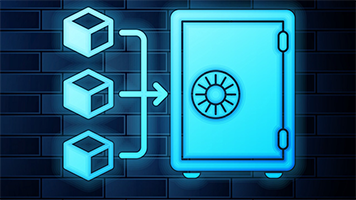What is Crypto staking, and how it works?
S taking uses specific currencies to help with transaction validation on a blockchain network. Investors who stake enjoy higher returns than those who save in a standard savings account.
Despite the sophisticated vocabulary, the fundamentals of crypto staking are rather straightforward. Furthermore, an increasing number of online exchanges seek to make crypto staking more accessible to the general public.
What is crypto staking, and how does it work?
In cryptocurrencies that adopt the proof-of-stake idea, staking is how new transactions get recorded to the network.
A block gets added every time to the network. New bitcoin coins are created and paid as incentives to the block's creator. Even though other blockchains utilize a different type of cryptocurrency for rewards, the incentives are usually the same coin that users are staking.
To stake crypto, you must own a cryptocurrency that uses the proof-of-stake algorithm. After that, you may determine how much you want to wager. You may do so on several well-known cryptocurrency exchanges.
When you stake your coins, you retain possession of them. You're putting them to work, and you may unstack them at any time if you wish to trade them later.
The unstacking process may take some time, and you may be obliged to stake coins for a certain length of time with some cryptocurrencies.
Staking isn't an option with certain types of cryptocurrencies. Many cryptos apply the proof-of-work to add blocks to their blockchains. The problem with proof of work is that it needs a lot of computational power.
As a result, cryptocurrencies that employ proof of work consume a lot of energy. Due to environmental issues, Bitcoin is particularly has been chastised.
Proof of stake, on the other hand, needs far less effort. It also makes a more scalable solution to manage higher transaction volumes.
What is Proof of Stake, and how it works?
You've undoubtedly heard of Proof of Work if you know how Bitcoin works. It's the system that permits transactions to be in the group to blocks. The blockchain is then created by connecting these blocks.
Miners compete to solve a difficult mathematical challenge, and the first person to solve it gets to add another block to the blockchain.
Proof of Work has shown to be a fairly reliable approach for achieving decentralized consensus. The issue is that it necessitates a great deal of arbitrary calculation.
The miners are striving to solve the riddle has no other function except to keep the network safe. One may argue that this, in and of itself, justifies the excessive computation.
Given below are some of the advantages of staking cryptocurrency:
1. It's a simple method to make money from your bitcoin investments.
2. Unlike crypto mining, crypto staking does not require any special equipment.
3. Why You're contributing to the blockchain's safety and convenience, plus it's more ecologically friendly than crypto mining.
A few risks to be aware of when staking cryptocurrency:
1. Cryptocurrency values are erratic and can plummet suddenly. In case the value of your staked assets plummets, whatever interest you receive on them may wipe out.
2. Staking may compel you to keep your coins locked up for a set period. You will be unable to do anything with your staked assets during that time, including selling them.
3. If you wish to unstack your cryptocurrency, you may have to wait seven days or longer.
Related Post

What is Blockchain Technology behind Cryptocurrency?
ABlockchain is a decentralized and shared database across computer nodes in the network. A Blockchain acts as a database, storing data in a digital mode…
What is Crypto staking, and how it works?
Staking uses specific currencies to help with transaction validation on a blockchain network. Investors who stake enjoy higher returns than those who save…
5 Altcoins to make profit in 2022
Acryptocurrency other than Bitcoin is known as an altcoin. Various coins and tokens have emerged as substitutes to Bitcoin, which…
 2022 Insureyourstuff
2022 Insureyourstuff